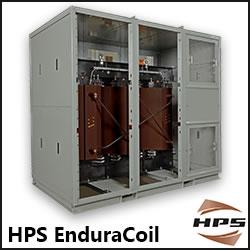A Registry in Transition: Hold on a minute. Continuity Matters for Clean Energy Markets in the West
Over the past decade, corporate energy buyers have emerged as the most significant driver of renewable energy development in the United States. Companies across industries—tech, retail, manufacturing, finance—have invested billions of dollars in renewable energy contracts.
Occasionally life mirrors television sit-coms. Just like the show The Big Bang Theory, sometimes the geeks really are the stars. That is certainly true when it comes to the market for renewable energy. And it's why we need to listen to the experts close to the details regarding a very concerning development with the otherwise "geeky" accounting and tracking system that underpins the largest renewable energy market the US.
Over the past decade, corporate energy buyers have emerged as the most significant driver of renewable energy development in the United States. Companies across industries—tech, retail, manufacturing, finance—have invested billions of dollars in renewable energy contracts. In fact, the members of the Clean Energy Buyers Association (CEBA) have purchased over 100 GW or new generation and helped unleash a wave of economic development for communities across the country. All these transactions depend on the out-of-sight-out-of-mind existence of a reliable, robust, trustworthy system of accounting and tracking to ensure the integrity of the market. In the US we call this system Renewable Energy Certificates (RECs) and each region has an administrative registry securing the data and huge volume of transactions necessary to make the system work. No matter how renewable energy is purchased, via a utility to meet state mandates, a third-party contract, a virtual power purchase agreement or in REC transactions themselves, the registry tracks every single kilowatt hour generated across the system.
That's why a new development in the Western Interconnection is so concerning. The Western Electricity Coordinating Council (WECC) recently announced plans to separate from the Western Renewable Energy Generation Information System (WREGIS), rebuild its registry software from scratch, and migrate existing stakeholder data into a brand-new system. This proposal deserves a lot of scrutiny from all of us, buyers, sellers, regulators, and advocates. A massive shift of this type introduces major risks for reliability, transactional integrity and costs. Most of us have experienced a major business disruption associated with software migration, let alone building an entirely new platform. Adding to the concern is that there doesn't seem to be any "upside" from this proposal, no new functionality, added integrity, transparency or benefits for users are being proposed.
Corporate Buyers Need Stability, Not Disruption
From my years in corporate renewable energy procurement within multinational companies to my time leading CEBA, I know what confidence in the system is critical for clean energy buyers. They need transparent, functional registries that ensure the clean energy they procured is verifiable, traceable, and delivers the climate benefits they promised to customers, investors, and regulators.
Rebuilding WREGIS from scratch, while also navigating a CEO change , WECC seems to be introducing unnecessary instability in one of the the largest REC markets in North America. Market participants already invested millions of dollars and countless hours integrating their systems with the existing platform. Forcing another migration—while publicly acknowledging "severe integration risk"—is a recipe for disruption. At a minimum this proposal deserves a great deal of engagement from regulators and market participants including buyers, developers and the advocacy community - all of whom depend on total confidence in the system to ensure that clean energy claims are credibly tracked and reported.
A Better Path Forward: Continuity First
Oversight agencies and market participants should give more consideration to a straightforward competing alternative. CleanCounts, formerly known as M-RETS, already operates the software that powers WREGIS today. They have made a simple proposal: keep the data where it is and maintain the full feature set Western stakeholders rely upon. They even offered to freeze pricing through 2029. It looks like CleanCounts' continuity-first approach would return millions of dollars to stakeholders, while ensuring uninterrupted service. And rather than stripping out features in a "minimum viable product," CleanCounts' platform has a proven track record of innovation—from hourly RECs to green hydrogen certificates—that matches the ambitions of states, utilities, and corporate buyers alike.
For corporate energy buyers, continuity isn't just about convenience. It's about protecting the integrity of renewable energy markets. Without reliable registries, the value of RECs declines, and the credibility of clean energy claims comes into question. That undermines the very momentum that has made the U.S. a global leader in corporate-driven clean energy procurement.
A Call for Transparency and Accountability
Ultimately, this comes down to governance. WECC made these decisions without a mandate from regulators broad support from either of the committees chartered to inform and guide WREGIS. Major policy shifts of this magnitude deserve robust input from the very stakeholders who depend on the system every day.
I urge regulators to pause. Let's listen to the geeks - the folks closest to the details and most familiar with the platform who are raising concerns. We need to ask more questions and solicit input from the key market participants who rely on this system. The success of clean energy markets depends on reliable infrastructure that buyers and sellers can trust.
By Kevin Hagen
Featured Product

